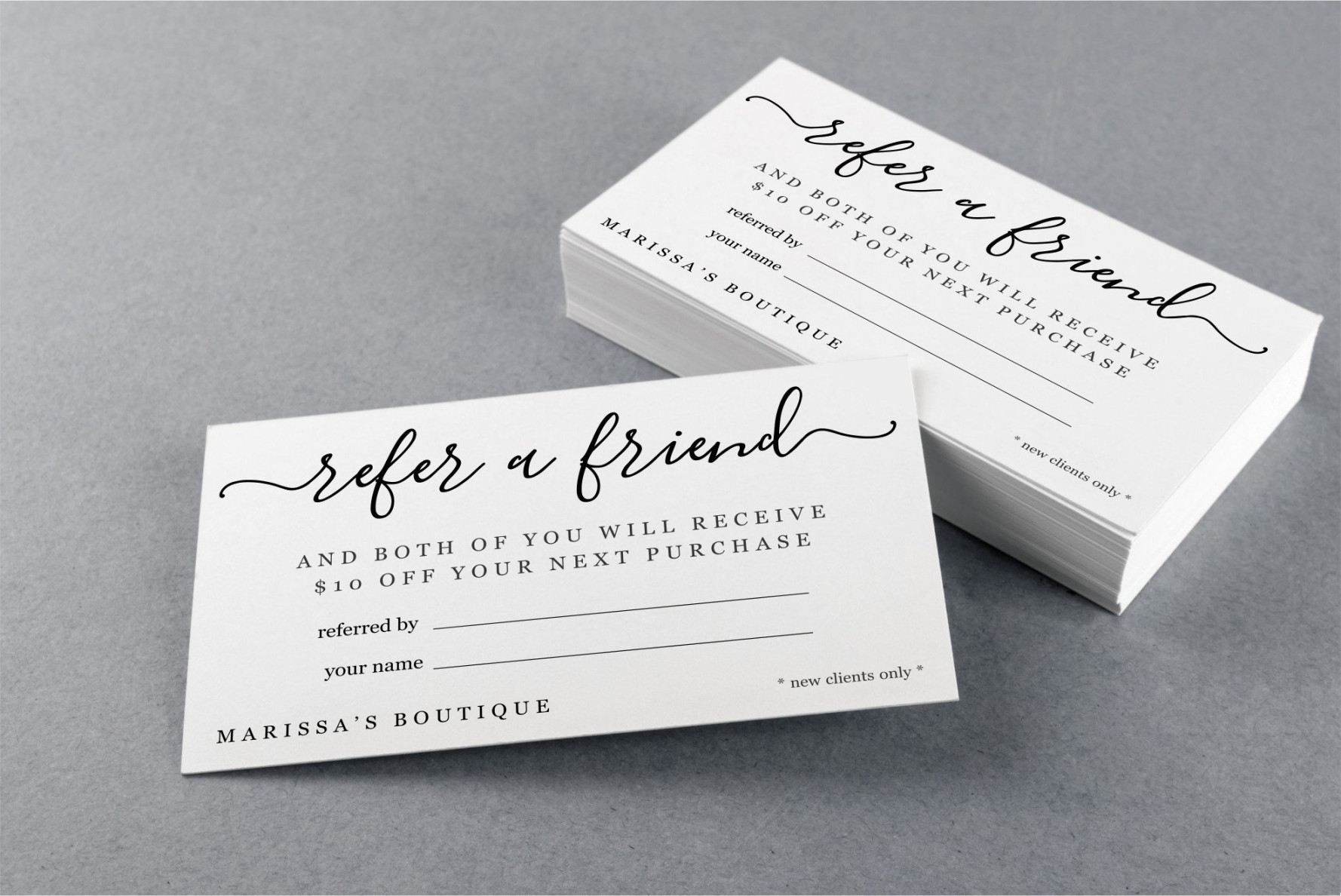A referral Card is a powerful marketing tool that can significantly boost your business by leveraging the trust and credibility of your satisfied customers. When designed effectively, a referral card can serve as a tangible representation of your brand’s value and encourage recipients to share their positive experiences with others.
1. Define the Purpose of Your Referral Card

Before embarking on the design process, it is crucial to clearly define the purpose of your referral card. Consider the following questions:
What specific action do you want recipients to take? Are you aiming to drive new customer acquisitions, increase repeat business, or generate positive online reviews?
2. Choose the Right Format
The format of your referral card should be visually appealing and easy to read. Consider these options:
Single-sided card: A simple and cost-effective choice that can be easily distributed.
3. Select a Professional Design Aesthetic
The design of your referral card should reflect your brand’s identity and convey a sense of professionalism and trust. Key design elements to consider include:
Color palette: Choose colors that complement your brand’s logo and evoke the desired emotions.
4. Incorporate Essential Information
Your referral card should include all the necessary information for recipients to take action. Consider the following elements:
Your business name and logo: Ensure your branding is prominently displayed.
5. Personalize Each Card
To make your referral cards more impactful, consider personalizing them with the recipient’s name and information. This adds a touch of exclusivity and shows that you value their relationship.
6. Proofread Carefully
Before finalizing your referral card design, carefully proofread all text for errors in grammar, spelling, and punctuation. A polished and error-free card will enhance your brand’s credibility.
7. Test and Refine
Once your referral card design is complete, test it with a small group of customers to gather feedback. Use their insights to make any necessary improvements and ensure that the card effectively achieves its intended purpose.
By following these guidelines and paying attention to the design elements that convey professionalism and trust, you can create a referral card that effectively drives new business and strengthens your brand’s reputation.